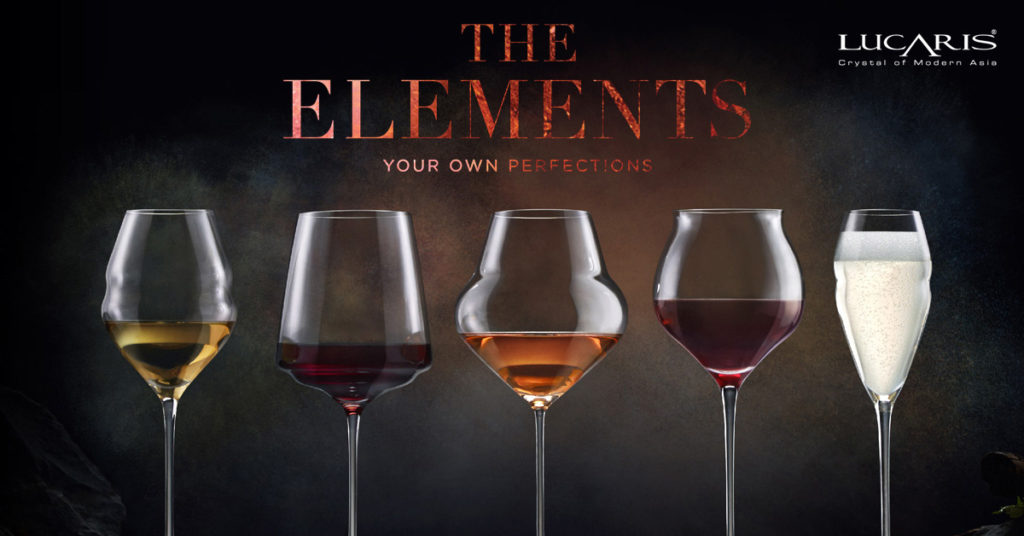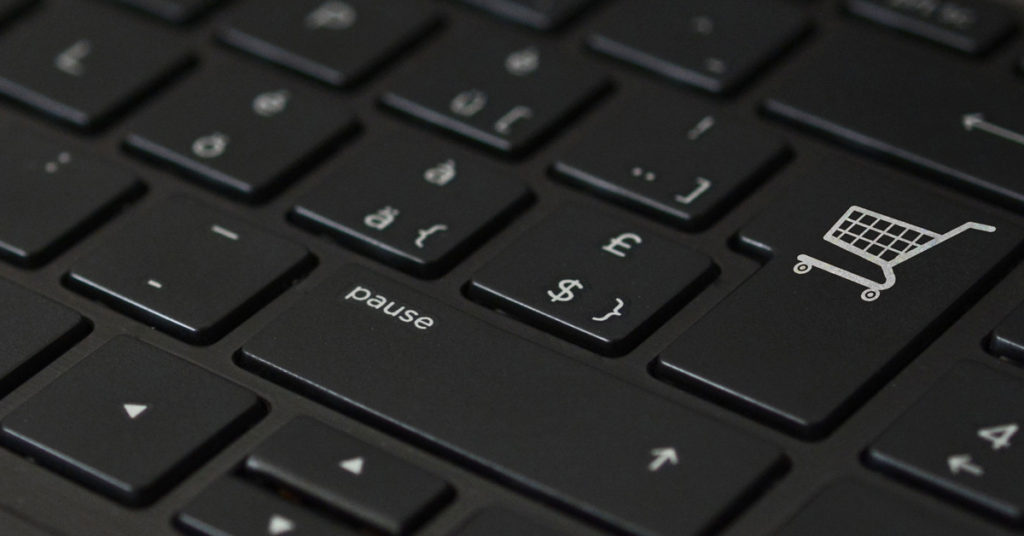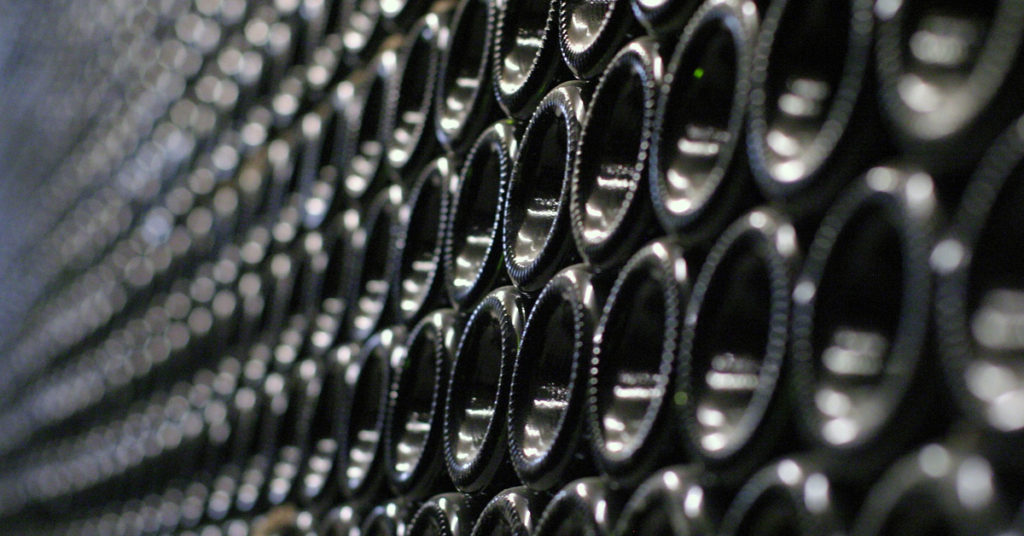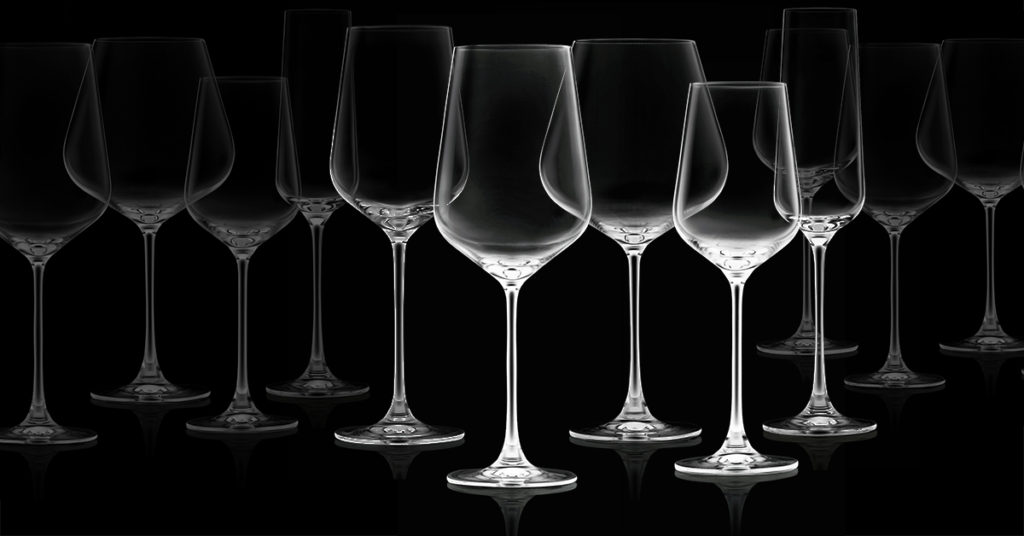
This summer, crystal glassware producer Lucaris and I released the Elements, a collection of handblown glasses based on a novel and admittedly somewhat controversial premise. We proposed that a wineglass’ most important job is to give you – the drinker – the perfect experience of the wine for you. I add the words “for you” because most of the time in the wine world we seem to forget that regardless of what we think and say, wine consumers have their own opinions about what is enjoyable and what is swill.
Each glass in our collection is named after one of the basic “elements”: Fire, Water, Air, Earth and Gold. They are meant to act as intuitive descriptors of different traits people enjoy in wine. Some people like their wine bold and powerful, like fire; others like it cool and refreshing like water. Our glasses work with whatever wine is poured into them to draw out those traits from the wine, making it bolder, fresher, more aromatic, rounder or whatever the drinker wants.
Having now had several months to present this concept to new drinkers and experts alike, I have been astonished time and again by how big a difference the glasses make. Terrifyingly, in some instances it seems to have a bigger impact than the grape variety. The reasons for this are complex – including a combination of fluid dynamics and psychophysics – and not the subject of our discussion today. Instead, I thought that as probably the most experienced user of these glasses (I now use them virtually every time I drink wine) I could help explain how each glass affects wine and hence which ones might best suit your wine tastes. This month we’ll talk about red wines and in future we’ll look at whites and more.
WATER – this glass, with its narrow and straight-sided rim and relatively tall, narrow bowl, may look like a white wine glass but it’s amazingly useful for cleaning up any sort of funkiness or excessive flab in reds. Big, chunky reds tend to come across as a little daintier in this glass and anything suffering from an excess of brettanomyces (sweaty or earthy notes) and/or volatile acidity (vinegar or nail polish remover aromas) comes out smelling a little fresher. To my immense surprise, some wine loving friends and I found that of all the glasses, the Water was the one that most flattered a bottle of 1970s Barolo we opened late one night, making its otherwise slightly tired fruit feel vibrant and shimmering.
FIRE – this is the go-to glass if you are someone who loves a big, fruit-packed Barossa Shiraz, Napa Cab or Amarone. Not only will big wines feel like they have adequate breathing room in this glass, even less high-octane wines (Pinot Noir for example) will seem plusher and richer-fruited. The ripples on the wide, flat bowl expose the wine to plenty of oxygen, helping unlock juicy fruit. The wider rim and straight sides mean that the wine immediately floods your whole palate, giving you a sense of richness and fullness from the get go. Acidity also seems a little softer and tannins more integrated thanks to the upfront blast of fruit.
AIR – this has been an unexpected favourite among many of my wine-loving friends, who love how well it works with everything from champagne to sherry. With a rounded, lantern-like belly that makes for easy swirling, this glass could tease perfume out of water, but the bowl’s tapered bottom keeps the wine from being overexposed to air and also keeps it nice and cool. Its narrow rim not only helps concentrate aromas but also sharpens up the acidity and firms up the tannins, creating a beautifully balanced shape. I do find this glass can render acidic reds a little shrill, so for those I’ll switch to Earth instead. However, if you’re someone who swoons to charming aromatics (you like Barolo, Barbaresco, Burgundy and other Pinots, Etna, Rioja, Chinon, etc.) this is the one for you.
EARTH – originally designed to flatter a wine’s rounder side, this glass has somehow also ended up emphasising savoury, “earthy” traits (perhaps it’s merely psychological, but to me it seems very clear). With its rounded bowl, conspicuous lack of straight surfaces or hard angles and sensuously curved lip, the glass shape is all softness and wines served from it act accordingly. One retailer remarked with surprise that the effect lingers well past the initial impression, with tannins feeling smoothened even after extensive swishing. While I can’t fully explain the phenomenon – one theory is that the rounded lip makes you anticipate a rounded texture, just as Cadbury found its chocolate was perceived as sweeter when they rounded its formerly sharp corners – any time I have an overly gruff, tannic red I serve it in the Earth and it takes the edge off like a charm.
GOLD – to be honest, this is the one glass in the collection that is not truly as multipurpose as the others, having been specifically designed for sparkling and sweet wines. However, in the interest of science, we have still frequently included it in our experiments. It acts a bit like the water glass on steroids – sharpening up the acidity and firming up the tannins while moderating any sense of fullness in your red wine. Given a tart, tough and skinny red is not likely to be many drinkers’ preference, I don’t think we’ll see many people using the Gold for reds, but if this is the way you like them, by all means give it a go.


